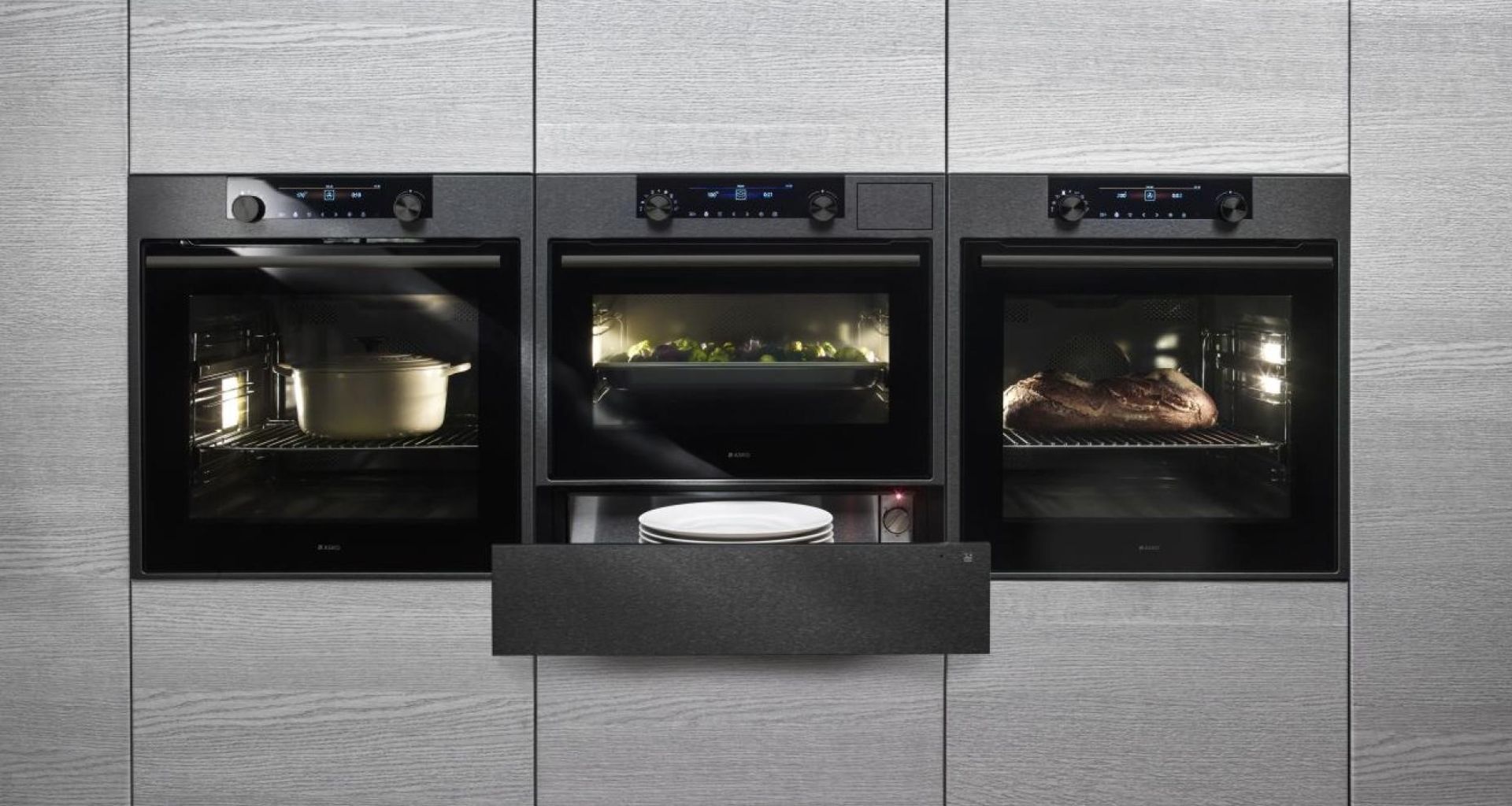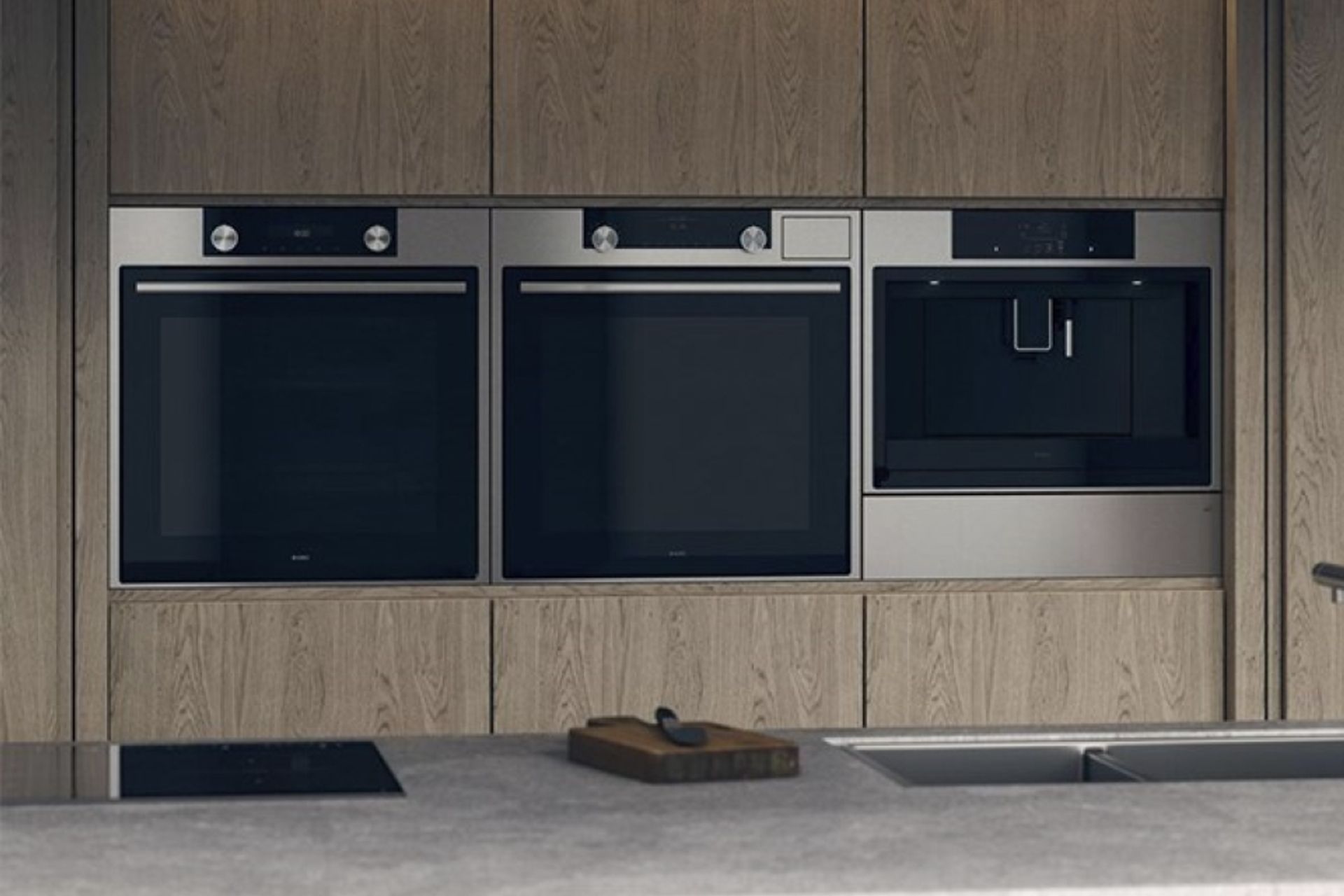Are warming drawers worth it? A comprehensive guide for 2024

Although warming drawers provide a great deal of convenience in the kitchen, many people still don’t understand their full potential. At first glance, many see this appliance as a storage solution for warming plates, however, warming drawers offer much more than that and can improve a home with their versatility and their many applications.
What is a warming drawer?
Warming drawers are modern appliances that ensure your meals stay deliciously warm by maintaining the ideal temperature of cooked dishes without drying them out. On top of this, warming drawers excel in other culinary tasks such as proofing bread dough, warming plates and cups, and even slow-cooking certain recipes. With features like adjustable temperature settings and moisture control, a warming drawer brings convenience and efficiency to any modern kitchen.
Pros and cons of warming drawers
Before buying any new kitchen appliance, it’s important to weigh the pros and cons of the product. Warming drawers are adaptable products that can be used in many types of kitchens with its many applications. However, there are a few factors to consider before making a final decision.
Pros of warming drawers
- Improved dining experience: Keeping dishes warm until they are ready to serve, ensuring meals are enjoyed at the ideal temperature.
- Versatility: Ideal for a variety of uses, including warming plates, proofing dough, slow cooking, and defrosting.
- Energy efficiency: Consumes less energy compared to reheating food in an oven or microwave.
- Time management: Helps coordinate meal times by keeping food warm for late arrivals or staggered dining schedules.
- Safe storage: Provides a safe place to keep food warm without the risk of it drying out or overcooking.
- Aesthetic appeal: Modern designs can enhance the look of your kitchen, especially when integrated seamlessly with cabinetry.
Cons of warming drawers
- Cost: Can be expensive to purchase and install, especially high-end models with advanced features.
- Space requirement: Requires dedicated kitchen space, which may be limited to smaller kitchens.
- Installation complexity: This may require professional installation, adding to the overall cost.
- Maintenance: Requires regular cleaning and maintenance to ensure optimal performance and hygiene.
- Learning curve: New users may need time to learn how to use all the features effectively.
Different uses of warming drawers
Many people are unaware of everything that a warming drawer can do. Sure, its main function is to warm food and plates; however, this kitchen appliance can be used in a number of ways, some of which may surprise you.
1. Keep food warm
Maintain the temperature of cooked dishes until ready to serve, or keep side dishes warm while preparing the main course.
2. Warm plates and cups
Preheat plates and cups to ensure meals and beverages stay hot longer.
3. Proof dough
Create an optimal environment that maintains consistent warmth for proofing bread and pastry dough.
4. Slow cook
Offers a low and steady heat setting, similar to a slow cooker, that can be used to make stews and other recipes.
5. Defrost food
Safely defrost frozen food items at a controlled temperature.
6. Reheat leftovers
Gently reheat leftovers while maintaining the texture and flavour of the original dish.
7. Warm towels
Warm towels for a spa-like experience at home, perfect for personal use or for warming towels for guests.
8. Melt chocolate
Gently melt chocolate without burning it, which is ideal for baking and dessert preparation.
9. Dehydrate food
Maintain low temperatures for consistent drying, a great way to dehydrate fruits, vegetables, and herbs.
10. Make yoghurt
Create a controlled, warm environment for fermenting homemade yoghurt.
11. Serve buffet style
Keep multiple dishes warm for buffet-style serving, which is ideal for parties and large gatherings.
Cost of running a warming drawer
In Australia, the cost of operating a warming drawer is quite reasonable due to the appliance's energy efficiency. Typically consuming between 450 to 600 watts per hour, warming drawers add only a small amount to the household electricity bill. With electricity rates in Australia averaging around 25 to 30 cents per kilowatt-hour, using a warming drawer costs approximately 12 to 18 cents per hour. When considering the convenience and enhanced dining experience provided by a warming drawer, the operating cost is a small, justifiable addition to the overall household energy consumption.
Types of warming drawers
Warming drawers come in various types, each designed to meet specific kitchen needs and preferences. From basic models that keep food warm until it's ready to be served to more advanced options that double as slow cookers, there's a warming drawer to support any kitchen. Understanding the different types available can help you choose the best one for your setup and cooking style. Here’s a look at the various types of warming drawers and their unique features.
1. Standard warming drawers
Basic models that keep food warm until it is ready to be served.
- Features: Temperature control, adjustable racks, and moisture control.
- Ideal for: Keeping plates and food warm, reheating leftovers.
2. Convection warming drawers
Models that use a fan to circulate warm air evenly throughout the drawer.
- Features: Improved temperature uniformity and faster warming.
- Ideal for: Baking or proofing dough and warming multiple dishes evenly.
3. Slow cooker warming drawers
Versatile units that can function as both a warming drawer and a slow cooker.
- Features: Slow cooking settings and temperature control.
- Ideal for: Slow cooking meals and keeping food warm over extended periods.
4. Integrated warming drawers
Built into kitchen cabinetry for a seamless look.
- Features: Customisable fronts to match kitchen decor and touch controls.
- Ideal for: Modern kitchens with a focus on aesthetics and functionality.
5. Commercial warming drawers
Designed for heavy-duty use in commercial kitchens.
- Features: Larger capacity, durable construction, and precise temperature control.
- Ideal for: Restaurants, catering services, and large households.
6. Outdoor warming drawers
Built to withstand outdoor conditions, it is perfect for outdoor kitchens.
- Features: Weather-resistant materials and temperature control.
- Ideal for: Keeping food warm during outdoor gatherings and barbecues.

Kitchens that should have a warming drawer
Warming drawers can be a valuable addition thanks to their features that support other appliances to create an exceptional dining experience. Those with busy households, such as family households, will experience the convenience of warming drawers, making dinnertime far more flexible among rotating schedules. People who love to host will also enjoy the warming function, keeping meals warm and ready for consumption throughout the evening of a fun get-together. Also, gourmet chefs and culinary hobbyists will add dough proofing and plate warming to their kitchen's arsenal. Lastly, luxury kitchens can add to their functionality and aesthetic appeal with this versatile appliance.
Kitchens that shouldn’t have a warming drawer
Warming drawers, while useful for keeping food warm, can take up cabinet or storage space that could be better utilised for other essentials in a small kitchen. Additionally, for someone who lives alone, a warming drawer might not be as useful, assuming that they’ll be cooking for themselves. Lastly, in households that don’t normally host nor have varying schedules, a warming drawer might not be as needed.
How to choose a warming drawer
If you’re now convinced that a warming drawer is right for you, there are several factors that you should consider to ensure that you choose one that will work well, both functionally and aesthetically.
1. Assess your cooking habits
Consider how often you cook and entertain and determine the size and capacity you need based on your usage.
2. Look for key features
When buying a warming drawer, look for key features such as adjustable temperature settings, moisture control, and multiple rack positions.
3. Consider design and finish
Ensure the design and finish match your kitchen decor and look for a seamless, integrated look if desired.
4. Evaluate available space
Measure your kitchen space accurately to ensure that there is enough room for installation. In general, you can expect to need a cabinet space of about 60cm wide, 20cm high, and 55cm deep, but consult the installation guidelines provided by the manufacturer.
5. Check for energy efficiency
Look for energy efficiency ratings to manage operating costs effectively.
6. Read reviews and seek recommendations
Research reliable brands with good customer support and check warranty options to ensure a worthwhile investment.
Understanding the full potential that makes a warming drawer worthwhile
Keeping food warm can be a challenge but the warming drawer offers a modern solution to this problem. Many people are unaware of its potential, but a warming drawer can significantly improve the efficiency and functionality of a kitchen. It offers a variety of uses, from keeping dishes and plates warm to proofing dough and slow cooking, all while being energy-efficient.
Despite some drawbacks, such as cost and space requirements, the advantages make it a worthwhile addition for busy households, entertainers, gourmet cooks, and those with luxurious kitchens. By understanding the different types of warming drawers and their features, as well as considering your specific needs and kitchen setup, you can choose the perfect model to enhance your culinary experience. This makes it absolutely worthwhile for many, bringing the benefits of warmth, convenience, flexibility and much more.
Related article: Must-have kitchen appliances for new homes in Australia
